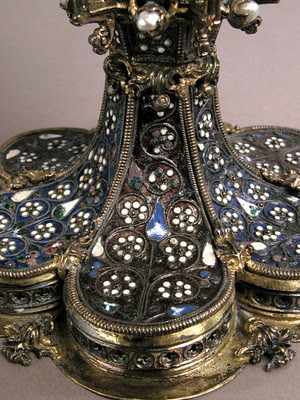The medieval castle of Siklós reopened after years of research and renovation. The castle lies in southern Hungary (just south of Pécs). For much of the 15th century (until 1481), the castle and the large estate was in the property of the mighty Garai family - even king Sigismund was held captive here at the beginning of his Hungarian rule, in 1401. The general layout of the castle stems from this period, but it was enlarged and rebuilt in several later phases. Most significant of these campaigns was the addition of a large late Gothic sanctuary to the castle chapel, built in the second decade of the 16th century, at the time of the Perényi family. Although the castle was occupied by the Turks for almost 150 years, and was rebuilt after that in Baroque style, it still preserves a lot of significant medieval and Renaissance details (see these photos). A large new exhibition hall was created during this most recent reconstruction, which enable the display of these fragments.
The reconstruction was preceded by several years of archaeological and architectural research, which brought to light many interesting finds, including a previously unknown small and painted wall niche. I hope to report on these finds in more detail soon - I am planning a trip to Siklós some time soon, and maybe a guest post can be organized with one of the archaeologists. For now, here is a photo of one of the frescoes in the castle chapel, discovered during a previous restorations campaign in the 1950s.
| St. Ladislas and St. Leonard - Fresco c. 1420, in the castle chapel of Siklós Photo by Attila Mudrák |
Siklós of course preserves many other treasures. I would only like to mention the former Augustinian church standing in the vicinity of the castle, which was decorated with an extensive fresco cycle at the beginning of the 15th century, commissioned by the Garai family. I have written extensively on these frescoes elsewhere - you may want to look at this Hungarian-language article with and English summary. For even more information, you can have a look at my dissertation (especially if you are based at any American institution with UMI/Proquest access...).





